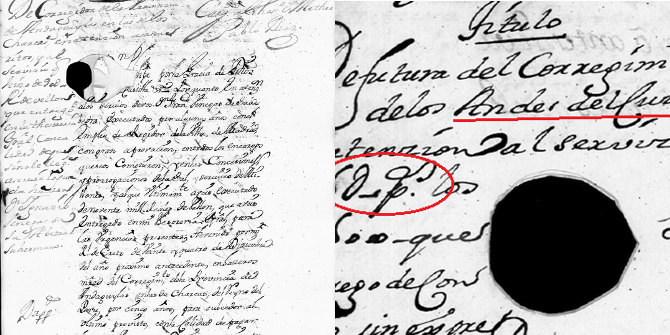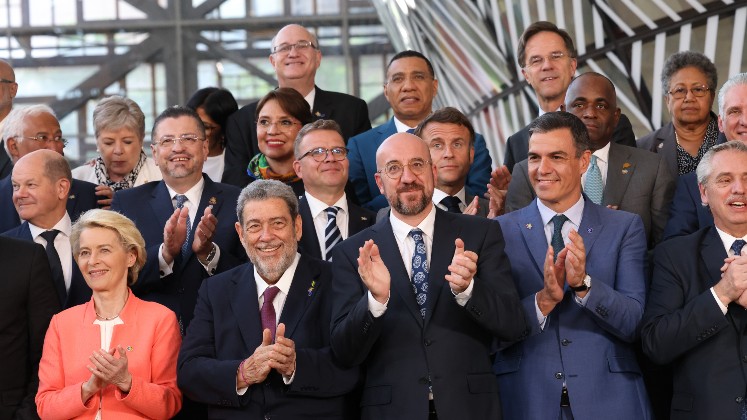 Contemporary regional disparities in Peru are related to differences in governance patterns during colonial times, with those provinces that were highly desirable to 18th century Spanish governors suffering greater conflict, ethnic segregation, and economic underdevelopment, writes Jenny Guardado.
Contemporary regional disparities in Peru are related to differences in governance patterns during colonial times, with those provinces that were highly desirable to 18th century Spanish governors suffering greater conflict, ethnic segregation, and economic underdevelopment, writes Jenny Guardado.
The idea that the colonial experience can explain current development patterns across the world has inspired a wide range of research projects across the social sciences. One of the most prominent ideas in this field is the theory that Spanish, Portuguese and British colonial institutions, among others, had an outsized impact on the type of economic path of their former territories. Examples of these include creating an unfavourable environment for the protection of property rights or putting in place colonial institutions of forced labor and slavery, as documented in the findings of recent landmark papers.

Yet, these results demand additional questions about how and why these colonial institutions might have played such a role: were these institutions detrimental because they led to persistent property arrangements and trade laws which were inimical to growth in the long-run? Or, because these colonial policies created inter-class resentment and lack of political will to implement development policies? Or because they led to the creation of an (in)efficient bureaucratic class and weak state capacity?
While these are all plausible explanations, in my research I argue that we observe these economic effects on formerly colonised because colonial institutions attracted a particular type of colonial governor-administrator who was detrimental to economic and political development.
To demonstrate the effects of the type of colonial governors, I examine a particular episode in the history of Spanish rule in Peru – namely, the routine sale of public offices to the highest bidders between 1673 and 1752. In these years the Spanish Crown was experiencing substantial financial problems due to its numerous and costly military conflicts in Europe. Thus, the Spanish Crown was willing to allow individuals who did not belong to the royal bureaucracy into positions of power in the colonial administration – provided they paid appropriately. These sales were a great success: between 1673 and 1752 around 83% of colonial administrators would enter by purchasing offices, compared to only 17% entering by royal appointment.
Figure 1 shows an example of a governorship title (left) specifying the price paid (right), in this case, 5000 pesos – ten times the year wage of a military captain at the time – in exchange for the province of Andes Del Cuzco near the former Incan capital.

I argue that looking at the prices individuals paid for office can tell us something about the motivations of colonial officials to seek positions in the colonial administration and about their expected performance while holding these positions. For instance, was the willingness to pay driven by a desire to help the Crown in distress? Or did these office-holders see it as a way to enter the royal bureaucracy and pursue a career?

A quick look at the spatial distribution of office prices (figure 2) shows large regional differences in the prices paid for different colonial provinces at the time. Thus ruling out that they may be merely reflecting geographic regions.
Prices appear to be significantly higher in provinces where the possibilities to extract rents from the indigenous population (a practice known at the time as repartimiento) were greater. This effect was particularly strong during years of European war in which the Spanish Crown was desperate for revenue. This suggests that during these wars, the Crown may not have been so discerning about who purchased office to govern in the colonies.
Furthermore, this paper shows that the wartime jump in prices is strongly correlated with a decline in the social status of governors. While this compositional shift does not prove a decline in quality, other historical evidence suggests these governors were indeed “worse” – at least by the standards of the time. For example, these newcomers would have lower levels of loyalty and fewer social ties to the Crown, and thus felt less pressured to perform accordingly. They also had lesser prospects for future appointments given their status as “outsiders”; and there is some evidence that their presence is associated with more uprisings by the local population against colonial governors. Put together, this variation in wartime jumps in prices across Peruvian provinces seem to capture this decline in the bureaucratic quality of colonial governors in the first half of the 18th century.
The key question is, did these officials impact the political and economic trajectory of the provinces they ruled? The short answer is that these price differences in war versus peace are negatively associated with current development outcomes in a number of ways. For instance, a greater difference in prices during war compared to peace in a province is associated with lower household consumption reported by individuals today, as well as a lower share of households with indoor sewage.
One may argue that these are simply naively reflecting geographic (dis)advantages across Peruvian provinces, or preexisting differences in colonial times, these explanations are not borne out in the data.
While these results document a negative impact of the difference between prices paid during war versus those paid during peace, it is important to know: first, when did the gap between provinces start to become visible and second, why would this effect of governors persist over time? Related to the first question, I use population data from 1780 until 2004 and find that already by 1827 (just after Peru’s independence from Spain) there is a significant population gap among provinces with greater differences in prices paid during war versus peace times – the proxy for worse criteria among colonial governors. As population can be used as a measure of economic development, the 1827 gap is evidence that today’s difference in consumption and public goods are mostly driven by activities occurring during colonial times, and not afterwards. This clearly limits the plausibility of other explanations based on later events, such as the fact that the returns to agricultural activities have slowly declined over time.
Yet, the question now becomes: why do we observe such an economic gap in 1827 (or earlier) and how does it persist? I find support in the data for two main explanations. The first explanation is the idea that the rule by these “worse” governors was associated with more anti-governor uprisings. Since violence discourages investment in physical and human capital and reduces the effectiveness of government, this can plausibly cause negative economic outcomes over time.
The second mechanism is based on the fact that the extractive activities of governors were clearly targeted against a particular ethnicity: the indigenous population in Peru. Excessive extraction by colonial rulers might have reduced the incentives to culturally assimilate, thus depriving these communities of the gains of trade with the (richer) majority group. This initial decision to not engage with the majority group would likely self-reinforce itself over time, especially when migration restrictions are lifted after independence and individuals are able to arbitrage differences, leading to even greater ethnic segregation.
Altogether, these results suggest that the roots of regional disparities in Peru can be linked to differences in governance patterns during colonial times: provinces highly desirable for 18th century Spanish governors have become places with more conflict, ethnic segregation, and economic underdevelopment for its 21st century inhabitants.
Notes:
• The views expressed here are of the authors rather than the Centre or the LSE
• Draws on the author’s Office-Selling, Corruption, and Long-Term Development in Peru (2017)
• Please read our Comments Policy before commenting





